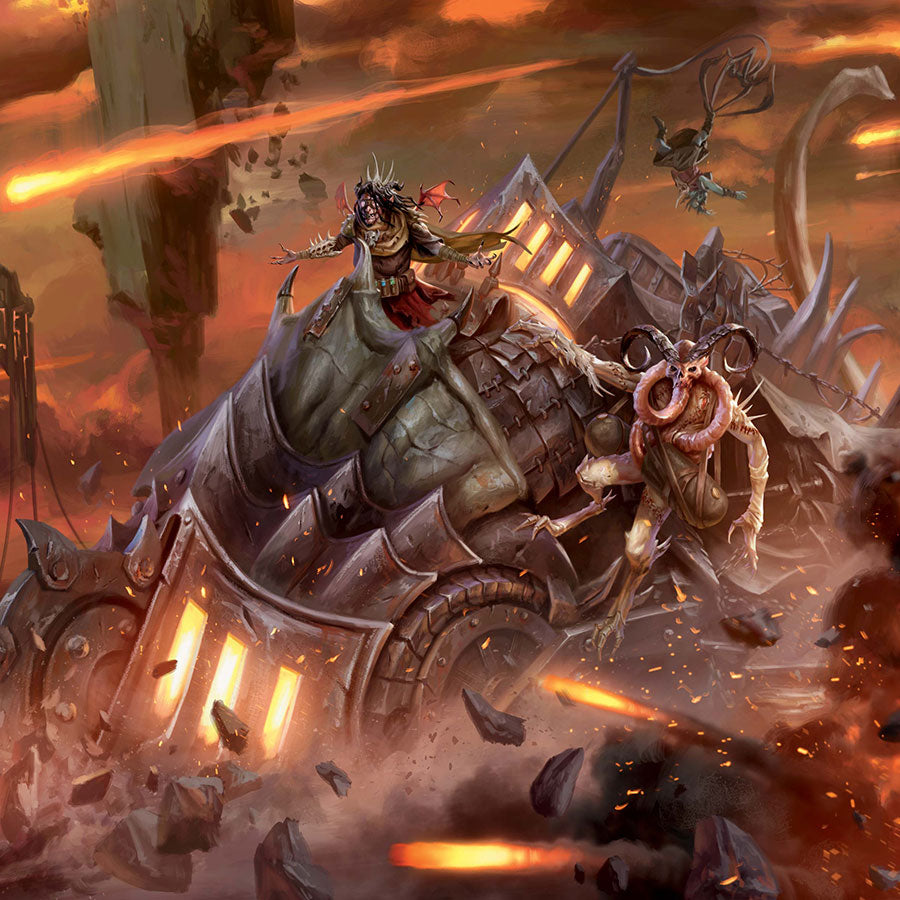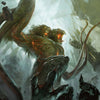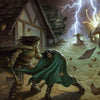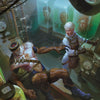How to Run an Evil D&D Campaign

Written by Luke Hart
Okay, today we’re going to talk about how to run an EVIL D&D campaign. And we’re going to get very practical; not just some high-level theory that you’re not sure how to implement at your game table. Specifically, we’re going to talk about how to STRUCTURE and DRIVE an evil campaign, which is something I don’t see talked about very much.
Also, a lot of the time when people say “evil campaign” what they are actually talking about is a normal campaign where the characters are just murder hobos. Well, that’s not an evil campaign. That’s a normal campaign that has player issues. So, today we’re going to be talking about how to run an actual, legitimate, EVIL CAMPAIGN, and I have four main points for you.
Watch or listen to this article by clicking the video below.
1. Establish a Code of Conduct
Just because the characters are evil doesn’t mean all norms of behavior are thrown out the window. This code is about ensuring the campaign stays enjoyable and avoids drama that could lead to real-life arguments, or worse, the group disbanding. Remember, the *characters* are evil—not the players!
Work Together as a Group. Even evil characters need a common goal. Real-life bad guys work together all the time (think criminal organizations). This guideline also keeps you, as the DM, from running multiple separate games if each PC goes off on their own, which would make the session unmanageable.
No PvP or Backstabbing. Some players might think “evil” means turning on each other, but long-term cooperation is necessary. Frequent betrayal can lead to resentment, frustration, and out-of-character drama, especially if players aren’t mature enough to handle PvP. Avoiding this will help keep the campaign and group intact.
Set Limits on Evil. Have a session zero where you discuss what behaviors are off-limits. Topics like slavery, child murder, and other dark themes should be addressed upfront. Setting these boundaries helps everyone feel comfortable.
Someone might object, “But this restricts my character’s agency!” Yes, it does to some extent, but it’s necessary. These rules help the group enjoy themselves without the risk of the game collapsing. If they’re not okay with this, they can always try a different evil campaign. Sometimes, experiencing the negative consequences of unchecked chaos can highlight the importance of rules.
2. An Evil Campaign is Character-Driven
Unlike standard D&D campaigns, which are often plot-driven by the DM, an evil campaign flips the script: the players’ characters, as the “villains,” drive the story. In a typical campaign, the PCs react to the bad guys. In an evil campaign, it’s the opposite—the PCs take action, and the “good guys” react.
Define Evil Ambitions. During session zero, have players brainstorm what their characters want to achieve. Evil ambitions could range from ruling a kingdom, destabilizing a political system, or dethroning influential figures. For example, maybe the group wants to discover the identities of the secret Lords of Waterdeep, eliminate them, and take their places.
Plan Based on Their Goals. Once the group has defined their evil ambitions, use this as the foundation for your campaign. Each adventure should reflect their goals. For instance, in the Waterdeep example, the first adventure might involve gathering information, spying, and meeting with the Xanathar Guild to prove their worth.
Remain Flexible. Evil campaigns often lead to unpredictable decisions. Plan only one adventure at a time, adjusting your campaign as needed. And remember, once the players start making moves, the good guys will react. Maybe a vigilante group catches wind of their schemes and starts interfering, creating organic opposition.
3. Structuring an Evil Campaign
There are two main ways to structure an evil campaign: following a traditional adventure style or doing the opposite by focusing on defense. Here’s a look at both approaches.
Traditional Adventure Style. Just like in a good-aligned campaign, the party has a clear goal for each adventure, and the DM designs scenarios to support that goal. In a character-driven campaign, the players decide on a high-level goal (e.g., infiltrating a noble’s manor), and you design the specifics—creatures, NPCs, challenges—to bring that adventure to life.
Reverse Structure – Defend the Base. Alternatively, the players can establish bases of operations where they further their goals, and the campaign centers on defending these bases. For instance, the group could establish a villa outside the city to strike at Waterdeep’s leaders. Then, they must defend this stronghold when heroes come to thwart them.
Best Approach. I recommend combining both methods. The adventure style aligns well with D&D’s mechanics, allowing for exploration, combat, and social interactions. Occasional “defend the base” scenarios can add variety but avoid making it the primary structure, as it often leans heavily into combat and may neglect the other pillars of play.
4. Choose the Right Opponents
Just because the PCs are evil doesn’t mean all of their enemies must be good-aligned. In fact, limiting the adversaries to good-aligned humanoids can lead to a monotonous campaign. Mixing it up with different creatures and adversaries—both good and evil—adds variety and keeps the game exciting for everyone.
Evil vs. Evil. Evil creatures often clash with other evil beings, so don’t be afraid to have them face rival villains, ambitious minions, or hostile factions. Maybe they go up against a rival cult or fend off a powerful demon who’s offended by their ambition.
Avoid Limiting to Humanoids. Variety is essential for keeping encounters interesting. Challenge your players with monsters from the Monster Manual by coming up with in-game reasons why these creatures might oppose the PCs. Not only does this keep the game engaging, but it also provides you, as the DM, with more creative freedom in designing encounters.
Get Loads of 5e Adventures and Resources for Your Games!
As a new dungeon master, I was overwhelmed with everything I needed to do. Learn the rules, create the adventures, run the game, handle problem players—it was A LOT! And even as a veteran DM, it’s still a lot. You might even feel that way yourself.
If you’re looking for loads of 5e adventures that you can prep in under 30 minutes or elements such as traps, puzzles, and encounters that you can drag and drop into your game at a moment’s notice, we have you covered!
With Lairs & Legends and Loot & Lore, you’ll get over 700 pages of 5e resources:
- Twenty-nine 5e adventures spanning levels 1 to 15 and designed for groups of 4 to 6 players.
- Over 100 new creatures from CR 0 to CR 24.
- Adventure Ideas
- Encounters with Full-Color and Blackline Digital Maps
- Patrons & Factions
- Magic Items
- NPCs
- Puzzles
- Random Encounter Tables
- Random Tables
- Spells
- Subclasses
- Traps
- Villains
Everything is designed to be EASY TO USE and QUICK TO PREP for your game. Our goal is to make game masters’ lives easier, not more complex!
Don’t spend another moment frustrated and overwhelmed as a GM. Pick up the Lairs & Legends Ultimate Bundle today and find out how much easier being a GM can be!
-
Posted in
Game Master How-To Articles







